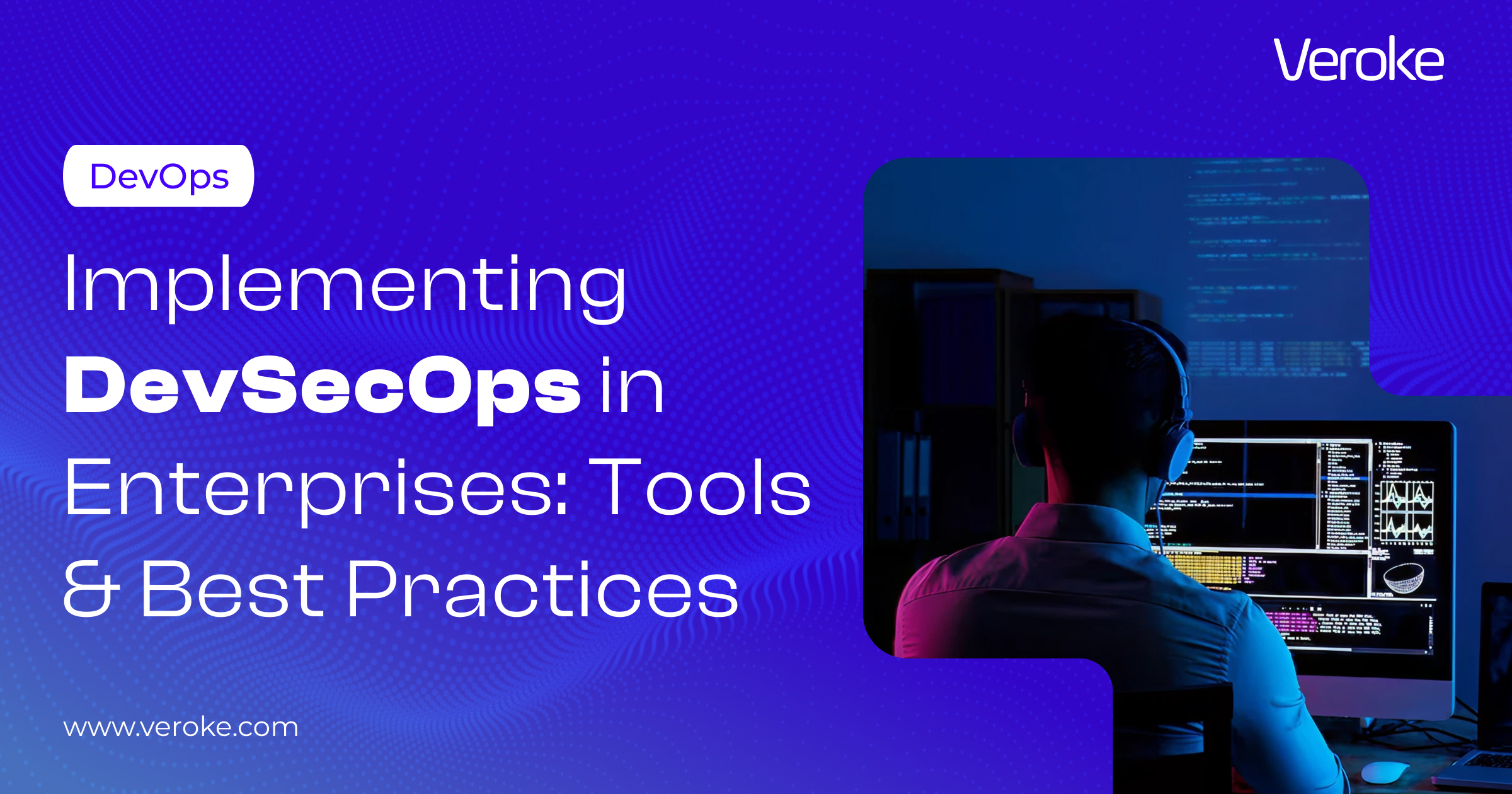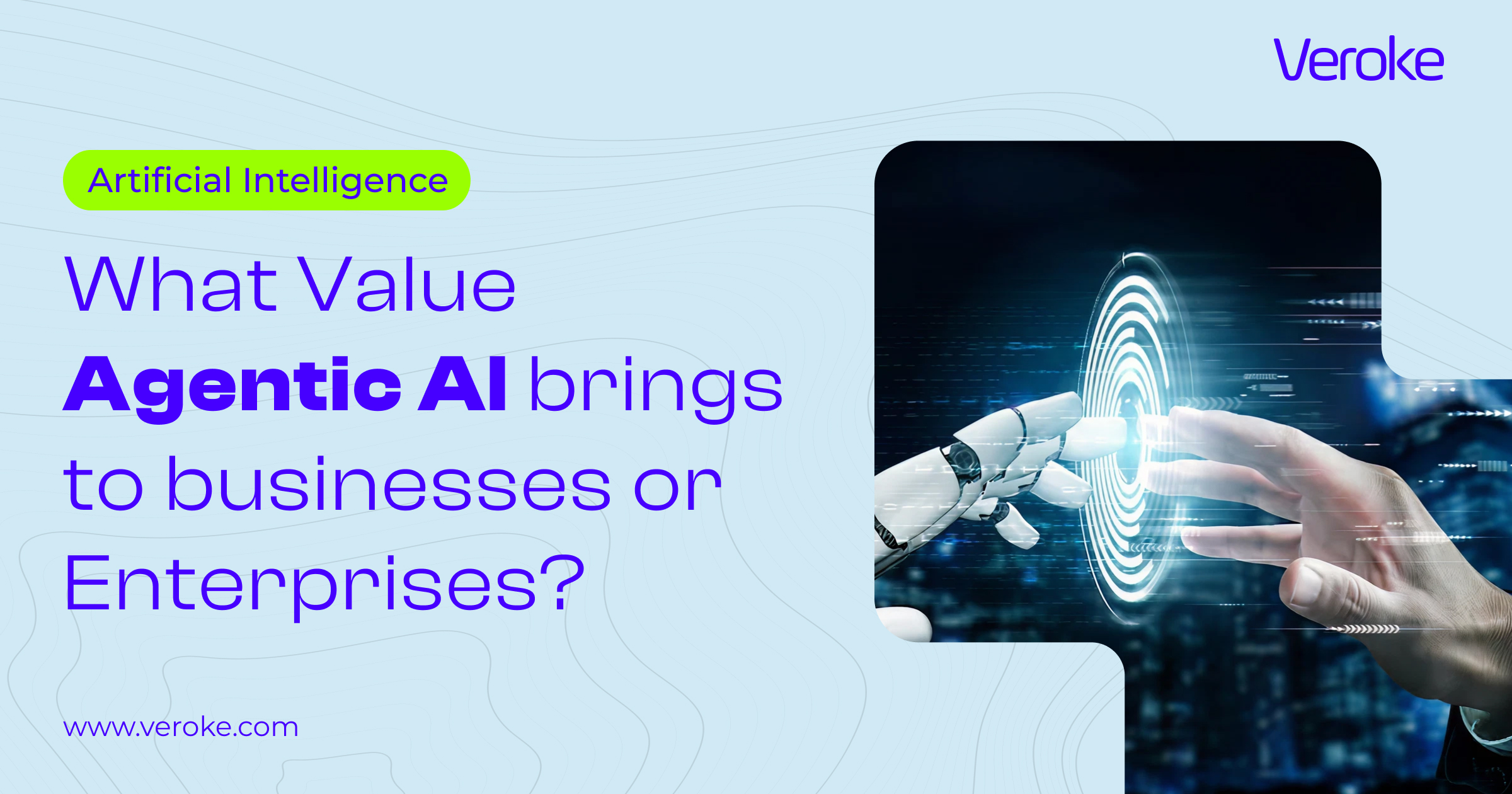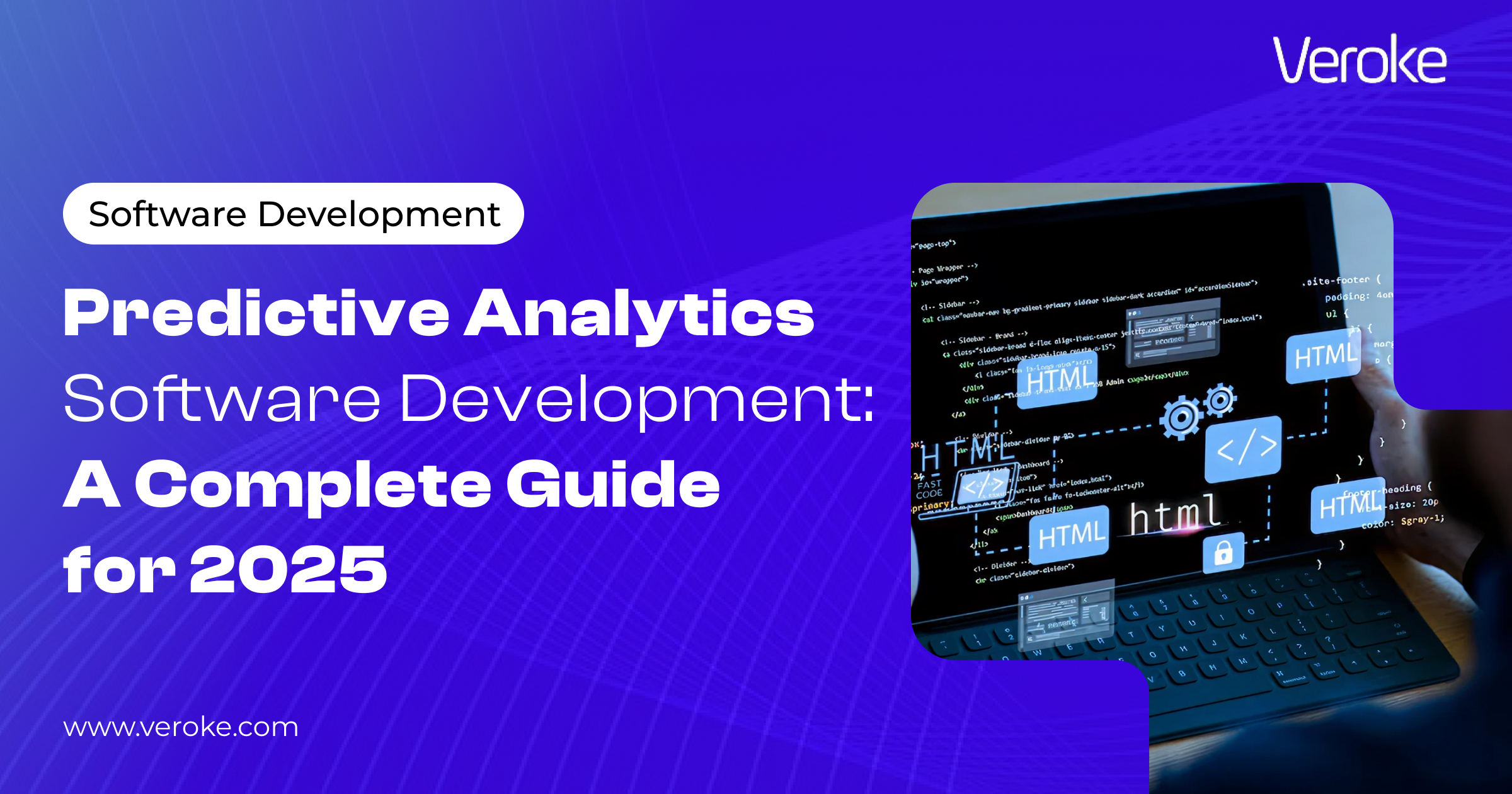Overview
Inside Saudi’s Tech Transformation
Get exclusive weekly insights into how the Kingdom is powering Vision 2030.
TL;DR
- The Generative AI in software development market is projected to reach $117.6 million by 2033, growing at 19.1% CAGR.
- GenAI is already streamlining requirement analysis, coding, testing, bug detection, documentation, and deployments.
- Developers benefit from faster coding, improved accuracy, lower costs, and more efficient workflows.
- GenAI is not replacing developers but augmenting their skills and enabling smarter, faster innovation.
Generative AI(GenAI) has come a long way from being just a tool for writing emails or doing research. Because with tools like GitHub Copilot, these GenAI tools are already changing the way developers approach development.
And this is only the beginning of the new AI-driven approach to software development, testing, deployment, and maintenance.
The Market Research reports predict that the GenAI market in software development will reach $117.6 million by 2033, with a CAGR of 19.1% during the forecast period from 2024 – 2033.

From generating code to content, product development to project management, GenAI has found many use cases at the enterprise level.
Today, we will be discussing GenAI use cases in software development and the way it is changing the world of software development.
Generative AI Use Cases in Transforming Software Development
AI-driven solutions are making a tangible difference, from generating test scripts to analysis and streamlining deployment. Let’s explore some use cases of GenAI that are revolutionizing software development:
➤ Requirement Analysis:
Before starting development, it is imperative to have clear goals for the project and an analysis of user requirements. GenAI can take part with Natural Language Processing (NLP) algorithms to analyze the requirements, identifying potential challenges, and generate suggestions.
➤ Generating Wireframes:
It is possible for GenAI to take as input both the features and context, which are then converted into wireframes to facilitate development. AI-powered tools offer creative potential by turning any document into a custom wireframe.
➤ Creating Test Scripts:
The GenAI can generate User Acceptance Testing (UAT) scripts based on acceptance criteria and known uncertainties so that quality assurance can be performed at a faster and more productive rate.
➤ Making Documentations:
GenAI can do great in making documentations. By enabling smoother handoffs between teams and boosting troubleshooting. It can generate release notes and user guides automatically.
➤ Streamline Deployments:
GenAI streamlines deployments, reducing time to market for engineering teams. By using historical trends to determine the best update rollout times and smooth deployment processes. GenAI can be used for predictive scaling and self-healing infrastructure in deployments. It ultimately scales your app to avoid downtime during unexpected traffic surges.
➤ Bug Detection:
GenAI simplifies the process of finding bugs and resolving issues in software development. With intelligent debugging, it can categorize and prioritize bugs, saving both time and effort. AI-backed bug-tracking tools provide suggestions to fix problems and help making data driven decisions.
➤ Support and Maintenance:
Another way GenAI is improving is by enhancing the continuous process of identifying, resolving, and preventing software issues while assisting users. By analyzing historical data, GenAI can predict possible issues, allowing for proactive maintenance and minimizing downtime. It can analyze code repositories, detect bugs, and streamline maintenance.
6 Ways Generative AI is Going to Transform Software Development
GenAI is set to revolutionize the software development landscape in profound ways. Here are six transformative changes GenAI will bring to the software development world, according to industry experts:

1. Improving Operational Capabilities in Development Processes
GenAI promises significant improvements in application reliability and operations. Early indications show that development tools will soon learn from user interactions, offering intuitive assistance. Some practical examples include:
- Providing real-time feedback loops to QA teams from customized test runs, eliminating the need for post-deployment fixes.
- Managing software deployments by staging new releases through CI/CD pipelines and rolling them back automatically if issues are detected.
- Generating feature flags as new features are developed, ensuring smooth integration.
- Developing web application components that adhere to established design standards based on learned patterns.
These advancements lead to questions about the next-generation DevOps and SRE capabilities that will be enabled or enhanced by GenAI.
2. AI Taking Part in Multiple Phases of SDLC
While current GenAI tools, like copilots, primarily assist with coding, future capabilities will extend to various phases and responsibilities within the Software Development Life Cycle (SDLC).
As best practices for integrating GenAI into the SDLC evolve, specialized models may emerge for different stages, such as one optimized for requirements gathering, another for code development, and yet another for quality assurance. The paradigm shift introduced by GenAI is already affecting QA by enabling more robust test cases and quicker feedback on code changes.
A less discussed but significant change is how all aspects surrounding coding will be transformed. Developers might need to adapt their communication, similar to how people adjust their language to interact with virtual assistants. Ideally, this shift will lead to productivity and quality improvements rather than just added conveniences.
3. New Paradigms Boost Integration
Integration capabilities have seen significant advancements over the past decade, thanks to APIs, IFTTT SaaS platforms, and iPaaS technologies. However, developers still spend a lot of time on tasks like mapping data fields, coding transformation logic, ensuring reliability, and optimizing performance.
Traditionally, the integration process has been fragmented across stages like design, build, test, integrate, deploy, deliver, and review. AI can unify these stages by seamlessly integrating data from various applications, promoting better collaboration among developers.
Soon, developers will likely harness GenAI to create codeless, self-healing integrations using natural language requirements and automatically generated visual flows.
4. Less coding
The use of GenAI in coding will transform how company leaders develop policies and monitor the software supply chain. Previously, organizations focused on tracking open-source and commercial software components, but GenAI introduces new complexities.
DevOps practitioners will be crucial in managing the AI supply chain, ensuring the security, authenticity, and origins of AI-based models. Scrutinizing these aspects will become part of daily operations. Developing a strategy to assess AI risks and properly manage an AI model’s components will be essential for maintaining AI hygiene and management within any organization’s DevOps infrastructure
5. Enhanced Code Validation
The ease of generating code with GenAI also introduces risks if the generated code contains security flaws, defects, or performance issues. The expectation is that with faster coding, developers will have more time and responsibility, along with better tools, for validating code before its integration into applications. However, will this expectation be met?
As developers leverage AI for increased productivity, they must also ensure thorough validation of its output. Implementing practices like “clean as you code,” which involves continuous checks and monitoring during the delivery process, allows developers to focus more on new tasks rather than fixing bugs in both human-written and AI-generated code.
6. Code Generation from NLP Prompts Becomes Standard
AI-generated boilerplate code and AI-assisted copilots translating natural language into functional code will make coding more efficient, simplify the understanding of complex codebases, and ensure adherence to best practices.
According to StackOverflow’s developer survey, 70% of developers are already using or planning to use AI tools in their development process. Of those currently using AI, over 82% leverage it to write code. These statistics indicate a significant shift in how developers will create, reuse, and build code components in the future.
Benefits of Using Generative AI in Software Development
GenAI in software development goes beyond development and benefits the whole team. Offering several advantages that extend beyond just the development phase.
1. User-Centric Approach
The integration of GenAI with NLP facilitates clear and user friendly communication. It translates complex technical updates, patches, and issue resolutions into clear, understandable language for users. This transparency not only boosts user satisfaction but also builds trust, as users are kept well-informed about their software.
2. Future-Proofing and Adaptability
GenAI’s ability to analyze industry trends and recommend optimal architectural patterns ensures that software systems are future-proofed. This means designers and developers can make smarter decisions based on the latest technologies, ensuring that the software stays adaptable and scalable for future needs. It’s like having a crystal ball that guides you to build software ready for tomorrow’s challenges.
3. Cost Savings
Consider the amount of manual work that goes into coding, documentation, testing, and deployment. GenAI automates many of these tasks, significantly reducing the need for manual intervention. This not only speeds up the process but also cuts down on costs. By optimizing resource use and minimizing manual labor, projects become more cost-effective without compromising on quality.
4. Improved Accuracy and Consistency
GenAI enhances accuracy and consistency throughout the software development lifecycle. Automated code generation adheres to coding standards, minimizing errors and improving overall code quality. This consistency extends to documentation, design patterns, and deployment scripts, creating a more reliable and robust software ecosystem.
5. Increased Efficiency and Speed
GenAI accelerates the software development process drastically. By automating code generation, developers can reduce manual coding efforts and focus on higher-level tasks. The speed gained from these automated processes enables faster project delivery, helping teams meet tight deadlines and stay competitive.
Final Verdict: The industry is changing
GenAI is not here to replace developers, it’s here to improve their capabilities and workflow. By adopting GenAI, you can not only speed up code development but also engage with a transformative technology that’s reshaping the industry. It’s an exciting time to be involved in software development, and those who quickly and ethically adopt generative AI will gain a significant edge.
Ready to explore how GenAI can transform your business? Book a Free Consultation with our experts at Veroke today, and let us help you transform your ideas into a digital reality.
FAQs
1. Will GenAI replace developers in the future?
No. GenAI is designed to augment human developers, automating repetitive tasks so they can focus on strategic and creative problem-solving.
2. Is GenAI safe to use in coding?
Yes, but validation is crucial. Developers must review AI-generated code to ensure security, performance, and compliance.
3. What are the top use cases of GenAI in SDLC?
Key applications include requirement analysis, wireframe generation, test automation, bug detection, deployments, and proactive maintenance.
4. How does GenAI help reduce costs?
By automating manual tasks like documentation, testing, and debugging, GenAI significantly reduces resource costs and accelerates delivery timelines.
5. Which industries benefit most from GenAI in development?
Sectors like finance, healthcare, e-commerce, and logistics are leveraging GenAI for faster innovation, better scalability, and improved customer experiences.
Want to know more about our service.
Inside Saudi’s Tech Transformation
Get exclusive weekly insights into how the Kingdom is powering Vision 2030.
Transform your Ideas into a Digital Reality
Get scalable, customized solutions for your business.




